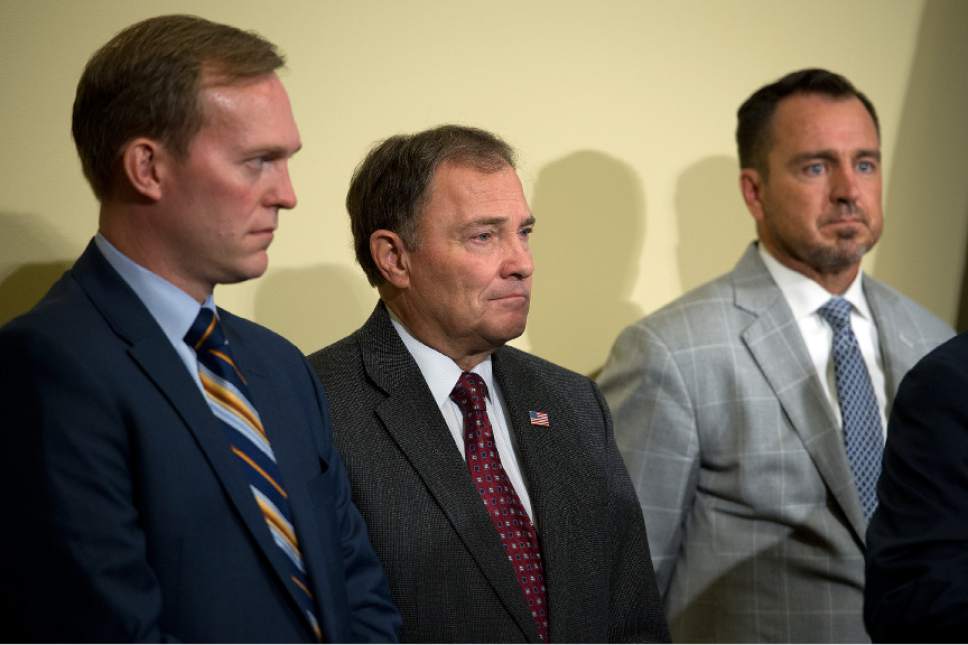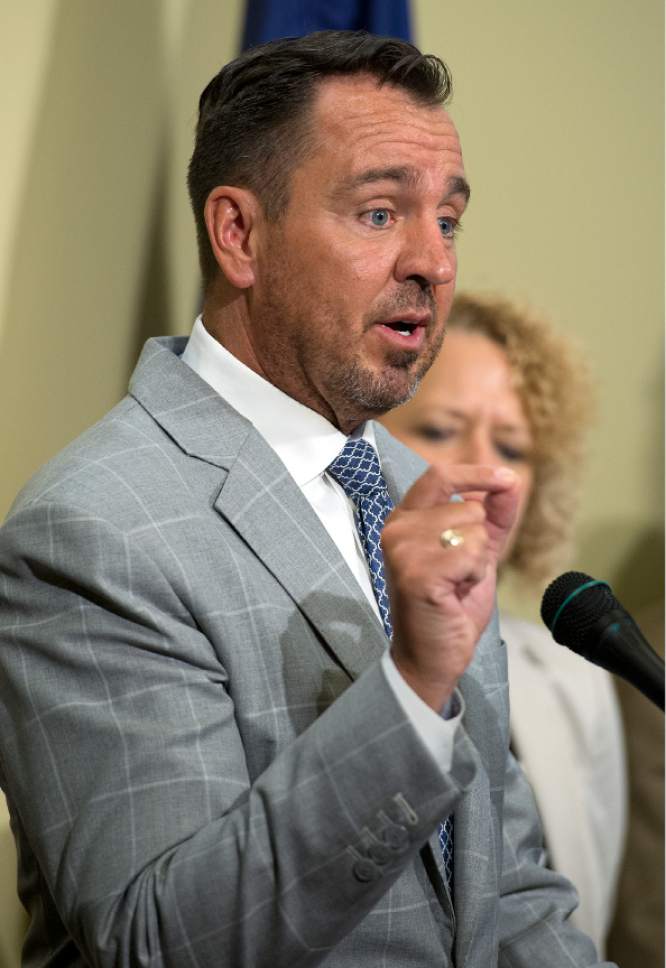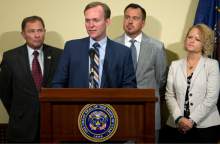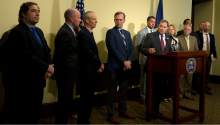This is an archived article that was published on sltrib.com in 2017, and information in the article may be outdated. It is provided only for personal research purposes and may not be reprinted.
More cops, more jail beds, more treatment for addicts to mitigate lawlessness in the Rio Grande neighborhood surrounding Salt Lake City's homeless shelter.
And Lt. Gov. Spencer Cox — though not dubbed the "homeless czar" — will be Gov. Gary Herbert's "point person" in the state's response to the crisis.
Those are about the only details revealed after Herbert held a closed-door summit Wednesday morning with state, Salt Lake County and Salt Lake City officials in an effort to double down on what has become the scourge of Utah's capital.
The governor said state and local entities will work together like never before to mitigate drug dealing and violence that have plagued the area around downtown's Pioneer Park — including two homicides in the past two days.
"It is not an easy issue. There is no easy fix," Herbert said. "But everyone is saying it's time — we can do better."
Such announcements have been made before, but this is different, said House Speaker Greg Hughes.
"I've had 15 years of public service. I've never had a meeting like we had today," the Draper Republican said. "We seldom have coordinated in the way we are now. There are no political parties. There is no turf."
The speaker noted significant efforts by private entities and public agencies that have helped hundreds of homeless people find housing. But more, he added, needs to be done.
The session was described as a frank discussion that focused on increased law enforcement and more investment in treatment for homeless people suffering from mental illness and drug addiction.
"Treatment is an important part of what we discussed today," the governor said.
But, Herbert noted, funding continues to be a challenge, particularly for treatment of addicts.
For about a decade, Utah has sought federal Medicaid "waiver" money that would fund treatment in the tens of millions of dollars. Thus far, that hasn't come through. But Hughes said discussions with the Trump administration have gone well, and he is hopeful more treatment money will materialize.
Specifics of the plan to root out drug dealing and violence in the area are still to come, Hughes said. But there are action items that will become clear in the coming weeks.
The governor's staff said an independent "homeless czar" — a notion Hughes has suggested — to coordinate efforts to reduce crime and chaos in the Rio Grande neighborhood may eventually be appointed. A Salt Lake Tribune poll found that 68 percent of registered voters were "definitely" or "probably" in favor of creating such a state-appointed overseer.
Cox — who, for now, will be the point person for the state's executive branch — emphasized the need for more jail beds and treatment facilities, saying the crime and drug use cannot be reduced unless there are places for lawbreakers and addicts.
Wednesday's high-level meeting also discussed the difference between homelessness and lawlessness and the challenges surrounding how the two interact, said Salt Lake County Mayor Ben McAdams.
The discussion, McAdams said, also included how each entity could bring to bear specific resources in the near future.
The county funds most of the homeless services, while Salt Lake City is charged with policing the area.
Three new homeless shelters/resource centers are scheduled to open in June 2019. But McAdams said, "We can't wait to address lawlessness."
The governor called the conference, which was closed to the public, after Hughes hoisted red flags in the wake of two incidents over the Fourth of July weekend that made headlines and reminded the public that despite significant efforts over the past four years the Rio Grande area remains out of control.
That was highlighted again this week with a bludgeoning death near 500 South and 500 West in the early morning hours of Tuesday and a shooting death early Wednesday.
Arrests are up in the past 12 months, according to Salt Lake City police. And Chief Mike Brown said crime in 2016 was down 6 percent in the area over the previous year.
Nonetheless, many observers say the neighborhood is at an all-time low.
The new initiative will show improvements in the coming weeks and months, the governor said.
Correction: July 26, 6:15 p.m. • Lt. Gov. Spencer Cox will be the state administration's point person on the homelessness crisis. An earlier version gave his new role an incorrect title.











